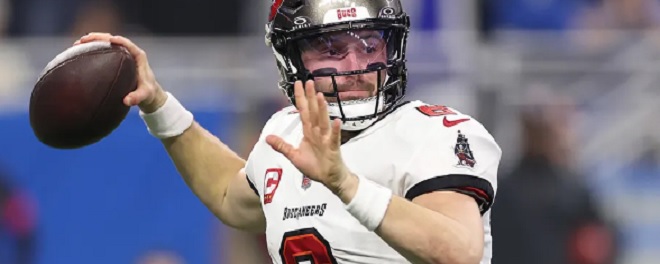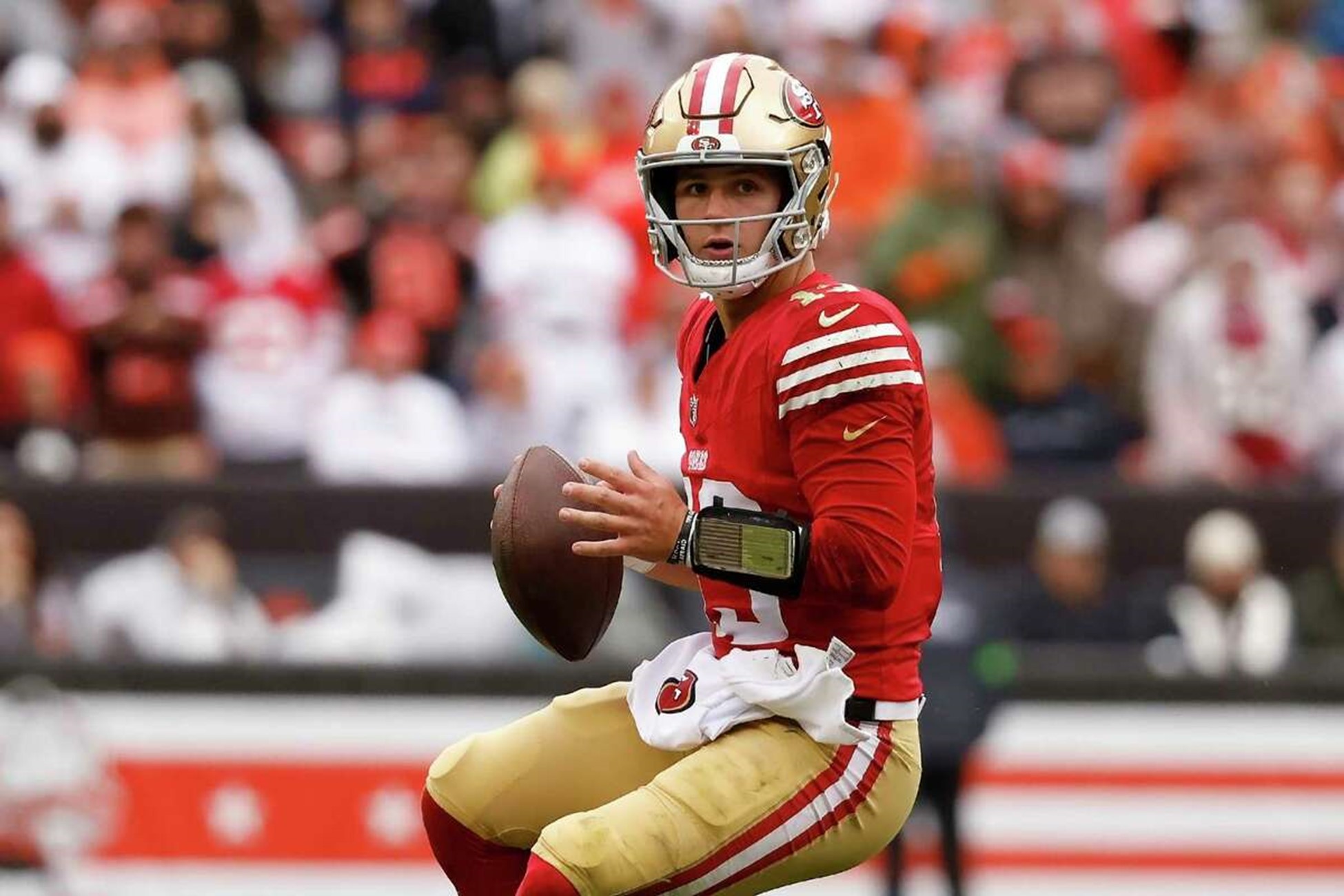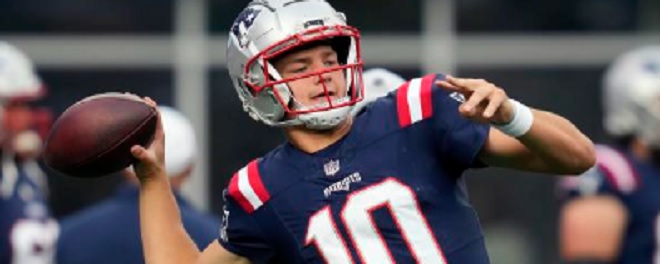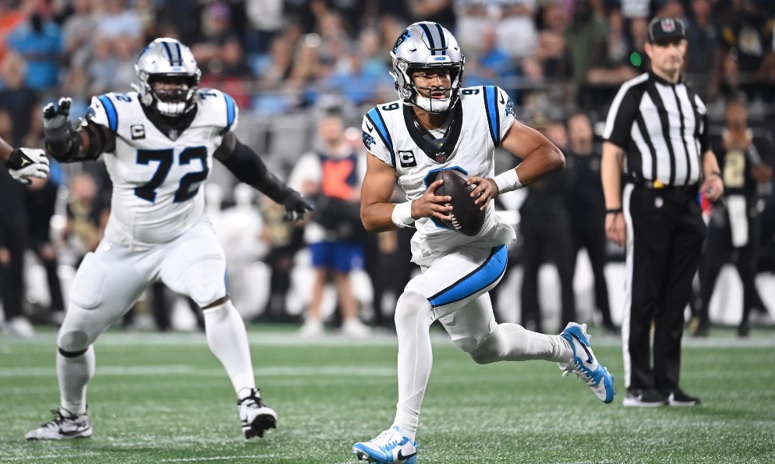 Arizona Cardinals (Last Year: 5-10-1)
Arizona Cardinals (Last Year: 5-10-1)
2020 NFL Season Preview:
Veteran Additions:
WR DeAndre Hopkins, OT Kelvin Beachum, NT Jordan Phillips, DE/OLB Devon Kennard, LB De’Vondre Campbell.
Early Draft Picks:
LB Isaiah Simmons, OT Josh Jones, DT Leki Fotu, DT Rashard Lawrence. Cardinals Rookie Forecast
Offseason Losses:
WR Damiere Byrd, TE Charles Clay, C A.Q. Shipley, LB Haason Reddick.
2020 Arizona Cardinals Offense:
The Cardinals made a very controversial move atop the 2020 NFL Draft when they opted to select Kyler Murray. They became the first team in the modern era to use consecutive first-round picks on quarterbacks without trading the second one they chose. Though some criticized this decision, it was clear that it was the correct choice at the time. The 2020 season only confirmed that. While Josh Rosen was outplayed by Ryan Fitzpatrick in Miami, Murray flashed his potential at times throughout his rookie campaign.
Murray definitely had some special moments. That was apparent immediately when he led an impressive comeback against the Lions in the season opener to force a tie. Murray threw for 300-plus yards on five occasions, which helped him win the Offensive Rookie of the Year award. He also showcased his trademark mobility, scrambling for at least 50 rushing yards in four contests.
Murray, however, was inconsistent. This is expected of rookie quarterbacks, but the offensive line played a part in this as well. Right tackle Marcus Gilbert was lost for the year with a torn ACL. His presence would help Murray immensely, but the Cardinals can’t exactly count on him to remain healthy, given that he’s missed 36 games in the past three seasons. Left tackle D.J. Humphries hasn’t exactly been reliable either, though 2019 was the first year in which he played all 16 contests. Humphries had previously missed 18 games in 2017 and 2018 combined. Because of this, the Cardinals used a third-round pick on tackle Josh Jones. The Houston product may not be ready to play yet, but he has the athleticism to eventually evolve into a capable starter.
The interior of the Cardinals front line isn’t exactly more durable. Both guards, Justin Pugh and J.R. Sweezy, have extensive injury histories as well. Center Mason Cole, meanwhile, was a third-round pick from the 2018 NFL Draft. He hasn’t played well yet in the NFL, but he could take a step forward this year.
The fate of the Cardinals this year depends on the offensive line, but even if the blocking doesn’t hold up, it’ll help Murray that he has an elite receiver at his disposal. Larry Fitzgerald could once be described as such, but he’s understandably not the player he once used to be. He’s now the second or third receiver, depending on how Christian Kirk is viewed. The top target will be DeAndre Hopkins, whom the Cardinals traded for this offseason. Arizona committed grand larceny in acquiring Hopkins, giving up just a second-round pick and decrepit running back David Johnson. Hopkins may not produce the same stats he did in Houston because Murray runs more frequently than Deshaun Watson, but his presence on the field will open things up for everyone else.
This includes Kenyan Drake, who will replace the aforementioned Johnson. Drake was stellar in place of an injured Johnson late in the year, finally living up to the potential some believed he had as a product from Alabama. Drake, like DeVante Parker and Ryan Tannehill, improved once he was separated from Adam Gase, so there’s definite upside for a big 2020 campaign from him, especially if the offensive line remains intact.
2020 Arizona Cardinals Defense:
The Cardinals had a major problem last year, which was their inability to cover tight ends. That sentence doesn’t appropriately describe how anemic they were at guarding the position; every week, the opposing tight end would absolutely torch an Arizona defense that couldn’t defend the middle of the field whatsoever.
That would explain why the Cardinals spent their No. 8 overall pick on Isaiah Simmons. The highly athletic Clemson product can play all over the defense, but one of his primary tasks will be to cover opposing tight ends. That’ll solve a major problem, as Simmons figures to start next to Jordan Hicks, who disappointed in his first year in Arizona. New linebacker De’Vondre Campbell will help in run support, but he tends to get very lost in coverage.
Arizona added another linebacker, acquiring Devon Kennard in free agency. Kennard isn’t a dominant player by any means, but he can get to the quarterback consistently – seven sacks in each of the past two seasons – and he holds up well against the run, too. He’ll be an upgrade over what Terrell Suggs gave the Cardinals last year across from Chandler Jones, who continues to be as dominant as ever.
Speaking of dominant defensive players, Patrick Peterson was sorely missed to start 2019 because he was suspended for six games. Peterson returned in Week 7 and had an excellent second half, even winning NFC Defensive Player of the Week in the antepenultimate game of the season. The problem was that the Cardinals didn’t have much else at cornerback, as 2019 second-rounder Byron Murphy struggled immensely in his rookie campaign. Perhaps he’ll improve. If not, former Falcon Robert Alford may start across from Peterson instead. This would not be good news because Alford is a pedestrian corner.
While Murphy struggled, another young defensive back, Budda Baker, finally began living up to expectations as a second-round selection from 2017. He was fine in coverage, but he tackled and played run support very well. He could make another improvement to his game in 2020, and the same could be said for Jalen Thompson, who started as a fifth-round supplemental pick from July. How much Thompson plays will depend on where Arizona uses Simmons, as he could play safety on base downs and move to linebacker in nickel or dime packages.
Rounding out the defense, the Cardinals used two mid-round picks on defensive linemen Leki Fotu and Rashard Lawrence. Neither figures to start right away, but Fotu could slide into a starting role to help stop the run if Jordan Phillips continues to struggle. Lawrence, meanwhile, is better at rushing the passer, and he can challenge for one of the five-technique spots, which are currently occupied by mediocre players like Jonathan Bullard and 2019 third-rounder Zach Allen.
2020 Arizona Cardinals Schedule and Intangibles:
Something that was apparent during Arizona’s run to the Super Bowl in 2008 was the home-field advantage the team unceremoniously established. Including the playoffs and excluding 2018 because that was a lost season, the Cardinals are 58-32-2 as hosts the past 10 years, though they were just 2-5-1 as hosts in 2019.
Losing Ted Ginn five offseasons ago continues to haunt the Cardinals’ special teams unit. They’ve been outgained on both punts and kickoff returns for the most part as a result ever since.
Zane Gonzalez was excellent for the Cardinals last year, hitting 31-of-35 attempts, including 2-of-2 from 50-plus. He missed just one extra point.
Andy Lee finished 25th in net punting average in 2017, but improved his ranking to fifth in 2018. He was in the middle of the pack in 2019, ranking 17th.
The Cardinals have a chance to get off to a nice start this season. Aside from the opener at San Francisco, Arizona has winnable games against the Redskins, Lions, Panthers and Jets. Things get more difficult after that, however.
2020 Arizona Cardinals Rookies:
Go here for the Cardinals Rookie Forecast, a page with predictions like which rookie will bust and which rookie will become a solid starter.
2020 Arizona Cardinals Positional Rankings (1-5 stars):
Quarterbacks |
   |
Offensive Line |
 
|
Secondary |
   |
Running Backs |
   |
Defensive Line |
  |
Special Teams |
  |
Receivers |
    |
Linebackers |
    |
Coaching |
 |
2020 Arizona Cardinals Analysis: Much of what the Cardinals do in 2020 depends on their offensive line. If Kyler Murray’s blocking holds up, the second-year quarterback could have a big year, especially with DeAndre Hopkins at his disposal and Isaiah Simmons to correct the major defensive liability. If, however, the linemen continue to get hurt, it’ll be yet another season of inconsistency for Arizona.
Projection: 9-7 (3rd in NFC West)
2019 Projection: 5-11. 2019 Actual Result: 5-10-1.
2018 Projection: 5-11. 2018 Actual Result: 3-13.
2017 Projection: 8-8. 2017 Actual Result: 8-8.
2016 Projection: 13-3. 2016 Actual Result: 7-8-1.
NFL Draft Team Grade: A- Grade
Goals Entering the 2020 NFL Draft: The Cardinals did a great job of helping Kyler Murray this offseason, as they traded for DeAndre Hopkins and re-signed both of their free agent tackles. They still need help offensively, but this draft class should be focused on improving one of the worst pass defenses in the NFL.
2020 NFL Draft Accomplishments: The Cardinals had every intention of trading out of the No. 8 overall pick, but they couldn’t believe that Isaiah Simmons fell to them. Simmons is exactly what they needed to improve their dreadful defense against tight ends. Simmons, who can play all over the defense, will be able to lock down tight ends if asked to. His presence alone will tremendously improve Arizona’s stop unit.
Arizona made another great pick after that, getting a steal with Josh Jones in the third round. Both tackles were re-signed, but both also happen to be very injury-prone. Jones is a nice insurance policy, and he should be able to take over as a starter at some point.
The rest of Arizona’s draft was solid, but unspectacular. All third-day choices earned grades in the B+/B range. I wish Arizona spent a resource on the secondary, but the team should be happy with its 2020 class.
NFL Draft Individual Grades:
8. Isaiah Simmons, LB, Clemson – A Grade
I had Isaiah Simmons slotted to the Cardinals forever, but moved him the day prior to the draft. It just made too much sense. Arizona was torched by tight ends week after week last year. They really needed to find a player who could help put a stop to that, and Simmons is the answer. Simmons will be able to play all over the Cardinals’ defense and help them immensely.
72. Josh Jones, OT, Houston – A+ Grade
Wow, what a steal. Josh Jones could have been chosen late in the first round, or early in the second frame at the latest. I didn’t think the Cardinals would go tackle at No. 8 because they re-signed both players at the position, but they needed an insurance policy for Marcus Gilbert. This is an excellent pick.
114. Leki Fotu, DT, Utah – B Grade
Leki Fotu doesn’t offer anything as a pass rusher, but that doesn’t matter very much in the fourth round. Fotu is a stout run plugger, which is something the Cardinals needed to help defend San Francisco’s ground-heavy attack.
131. Rashard Lawrence, DT, LSU – B Grade
Rashard Lawrence was very inconsistent at LSU, but he flashed his potential at times. The Cardinals have been trying to replace Calais Campbell for years. They’ll be hoping Lawrence can live up to his potential to be that guy, but I wouldn’t be so optimistic. Still, Lawrence is a decent gamble at this juncture.
202. Evan Weaver, LB, California – B Grade
Evan Weaver is a very smart and instinctive linebacker. Unfortunately, he may not have the athleticism to make it in the NFL. He should be able to help on special teams, at the very least. I wouldn’t bet against Weaver though, so I think this is a fine choice.
222. Eno Benjain, RB, Arizona State – B+ Grade
I wasn’t a fan of Eno Benjamin when I thought teams might take him in the fourth round. He’s a jack-of-all-trades, master-of-none back, but he’s a solid value in the seventh frame. He could end up becoming a decent backup for Arizona.
Follow @walterfootball for updates.
Season Summary:
Considering that the Cardinals had a rookie quarterback, a pedestrian offensive line, a leaky defense and a first-time head coach, no one should’ve been surprised that they were inconsistent last year. Much more is expected from Arizona in the second season of the Kyler Murray-Kliff Kingsbury era.
Offseason Moves:
Team Needs:
- Two Offensive Tackles: Protecting Kyler Murray is paramount. The Cardinals will have a huge weakness on the offensive line if D.J. Humphries is allowed to leave via free agency. Even if he’s retained, an upgrade will be needed across from him. Re-signed D.J. Humphries and Marcus Gilbert; signed Kelvin Beachum
- Center: A.Q. Shipley is another impending free agent on the offensive line, but he needed to be upgraded anyway.
- Cornerback: Once the Cardinals figure out their offensive line, they must upgrade their anemic pass defense. They have a huge weakness at cornerback, save for Patrick Peterson.
- Linebacker: Linebacker is also a huge problem in regard to the atrocious pass defense, as evidenced by Arizona’s inability to cover any tight end. Signed De’Vondre Campbell
- Edge Rusher: The Cardinals looked to have a couple of dynamic edge rushers entering 2019, with Chandler Jones and Terrell Suggs listed as the starters. Suggs, however, is no longer on the team, so Arizona will have to find someone new across from Jones. Signed Devon Kennard
- Defensive Tackle: Arizona never properly replaced Calais Campbell. An upgrade has been needed this entire time. Signed Jordan Phillips
- Wide Receiver: This could be the end for Larry Fitzgerald. Regardless, Arizona will need an upgrade at the position to go along with Christian Kirk. Acquired DeAndre Hopkins
- Guard Depth: Here’s another area where the offensive line must be bolstered. This area is less pressing, as some depth is needed behind Justin Pugh and J.R. Sweezy.
- Backup Quarterback: The Cardinals could use a solid veteran backup quarterback in the positional meeting room who can help Murray’s progression.
Follow me @walterfootball for updates.
2020 NFL Free Agent Signings:
-
 Kelvin Beachum, OT, Jets. Age: 31.
Kelvin Beachum, OT, Jets. Age: 31. 


Signed with Cardinals (1 year)
The Jets’ offense has been much better whenever Kelvin Beachum has been on the field. However, Beachum turns 31 in June, so regression and more injuries seem to be in the cards.
-
 Devon Kennard, DE/OLB, Lions. Age: 29.
Devon Kennard, DE/OLB, Lions. Age: 29. 


Signed with Cardinals
Devon Kennard has logged seven sacks in each of the past two seasons, and he has also held up well against the run. It’s puzzling as to why the Lions cut him.
-
 De’Vondre Campbell, OLB, Falcons. Age: 27.
De’Vondre Campbell, OLB, Falcons. Age: 27. 

Signed with Cardinals (1 year, $8.5 million)
De’Vondre Campbell is a solid linebacker when it comes to run support, but he struggles in coverage. He would be better off as a two-down player.
- Jordan Phillips, DT, Bills. Age: 27.

 — Signed with Cardinals (3 years, $30 million)
— Signed with Cardinals (3 years, $30 million)
Arizona Cardinals Free Agents:
Salary Cap: TBA.
-
 Kenyan Drake, RB, Cardinals. Age: 26.
Kenyan Drake, RB, Cardinals. Age: 26. 



Transition tagged by Cardinals
Kenyan Drake looked like just a decent pass-catching running back when he was with Miami, but that’s because Adam Gase once again failed to determine how talented a player of his was. Drake became a dynamic play-maker once he joined Arizona. Drake, who is just 26, has a very bright future ahead of him.
-
 D.J. Humphries, OT, Cardinals. Age: 26.
D.J. Humphries, OT, Cardinals. Age: 26. 


Re-signed with Cardinals (3 years, $45 million)
D.J. Humphries just played a full season for the first time in his career. He’s a solid left tackle whose durability appears to have improved. He’s only 26, so he could upgrade his play in the coming years.
-
 Larry Fitzgerald, WR, Cardinals. Age: 37.
Larry Fitzgerald, WR, Cardinals. Age: 37. 


Larry Fitzgerald is nearing retirement at the age of 37 (as of August). He had just 804 yards and four touchdowns in 2019, finishing on a down note. However, Fitzgerald can still be a dependable player, so it could help Kyler Murray if Arizona brings back Fitzgerald for another year.
-
 Haason Reddick, LB, Cardinals. Age: 25.
Haason Reddick, LB, Cardinals. Age: 25. 

Haason Reddick has largely struggled since being chosen in the first round of the 2017 NFL Draft. He was terrible this past season. However, he’s still just 25, so there is a glimmer of hope for him.
-
 Marcus Gilbert, OT, Cardinals. Age: 32.
Marcus Gilbert, OT, Cardinals. Age: 32. 

Re-signed with Cardinals (1 year, $3.75 million)
The Cardinals traded a sixth-round pick for Marcus Gilbert, but he never played a single down for them because of a torn ACL. Gilbert is always hurt, but he might have enough left in the tank to be a viable starter if he can remain healthy.
- A.Q. Shipley, C, Cardinals. Age: 34.


- Damiere Byrd, WR, Cardinals. Age: 27.

 — Signed with Patriots
— Signed with Patriots
- Jonathan Bullard, DE/DT, Cardinals. Age: 26.

 — Re-signed with Cardinals
— Re-signed with Cardinals
- Charles Clay, TE, Cardinals. Age: 31.


- Dan Arnold (RFA), TE, Cardinals. Age: 25.


- Cassius Marsh, DE/OLB, Cardinals. Age: 28.

 — Signed with Jaguars
— Signed with Jaguars
- Pharoh Cooper, WR, Cardinals. Age: 25.

 — Signed with Panthers (1 year)
— Signed with Panthers (1 year)
- Max Garcia, G, Cardinals. Age: 28.


- Brooks Reed, DE/OLB, Cardinals. Age: 33.


- Brett Hundley, QB, Cardinals. Age: 27.


- Joe Walker, LB, Cardinals. Age: 27.


- Clinton McDonald, DT, Cardinals. Age: 33.


- Jordan Mills, OT, Cardinals. Age: 29.

- Josh Shaw, S, Cardinals. Age: 28.

- Darrell Daniels, TE, Cardinals. Age: 25.

- D.J. Foster (RFA), RB, Cardinals. Age: 26.
 — Re-signed with Cardinals (1 year)
— Re-signed with Cardinals (1 year)
NFL Free Agent Tracker:
QB | RB | FB | WR | TE | OT | G | C | DE | DT | OLB | ILB | CB | S | K/P | FA Grades | FA Rumors
NFL Picks - Jan. 4
2026 NFL Mock Draft - Dec. 31
NFL Power Rankings - Dec. 29
Fantasy Football Rankings - Sept. 1




